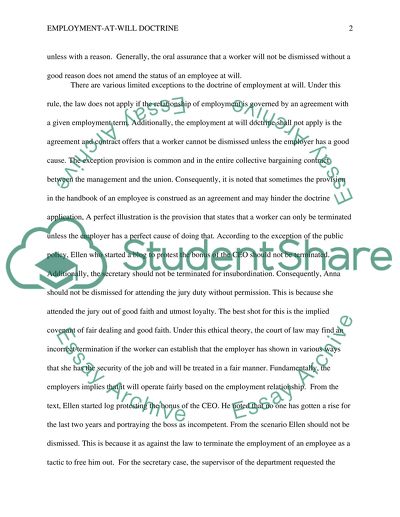Cite this document
(Employment-At-Will Doctrine Article Example | Topics and Well Written Essays - 1250 words - 1, n.d.)
Employment-At-Will Doctrine Article Example | Topics and Well Written Essays - 1250 words - 1. Retrieved from https://studentshare.org/human-resources/1679699-employment-at-will-doctrine
Employment-At-Will Doctrine Article Example | Topics and Well Written Essays - 1250 words - 1. Retrieved from https://studentshare.org/human-resources/1679699-employment-at-will-doctrine
(Employment-At-Will Doctrine Article Example | Topics and Well Written Essays - 1250 Words - 1)
Employment-At-Will Doctrine Article Example | Topics and Well Written Essays - 1250 Words - 1. https://studentshare.org/human-resources/1679699-employment-at-will-doctrine.
Employment-At-Will Doctrine Article Example | Topics and Well Written Essays - 1250 Words - 1. https://studentshare.org/human-resources/1679699-employment-at-will-doctrine.
“Employment-At-Will Doctrine Article Example | Topics and Well Written Essays - 1250 Words - 1”, n.d. https://studentshare.org/human-resources/1679699-employment-at-will-doctrine.


